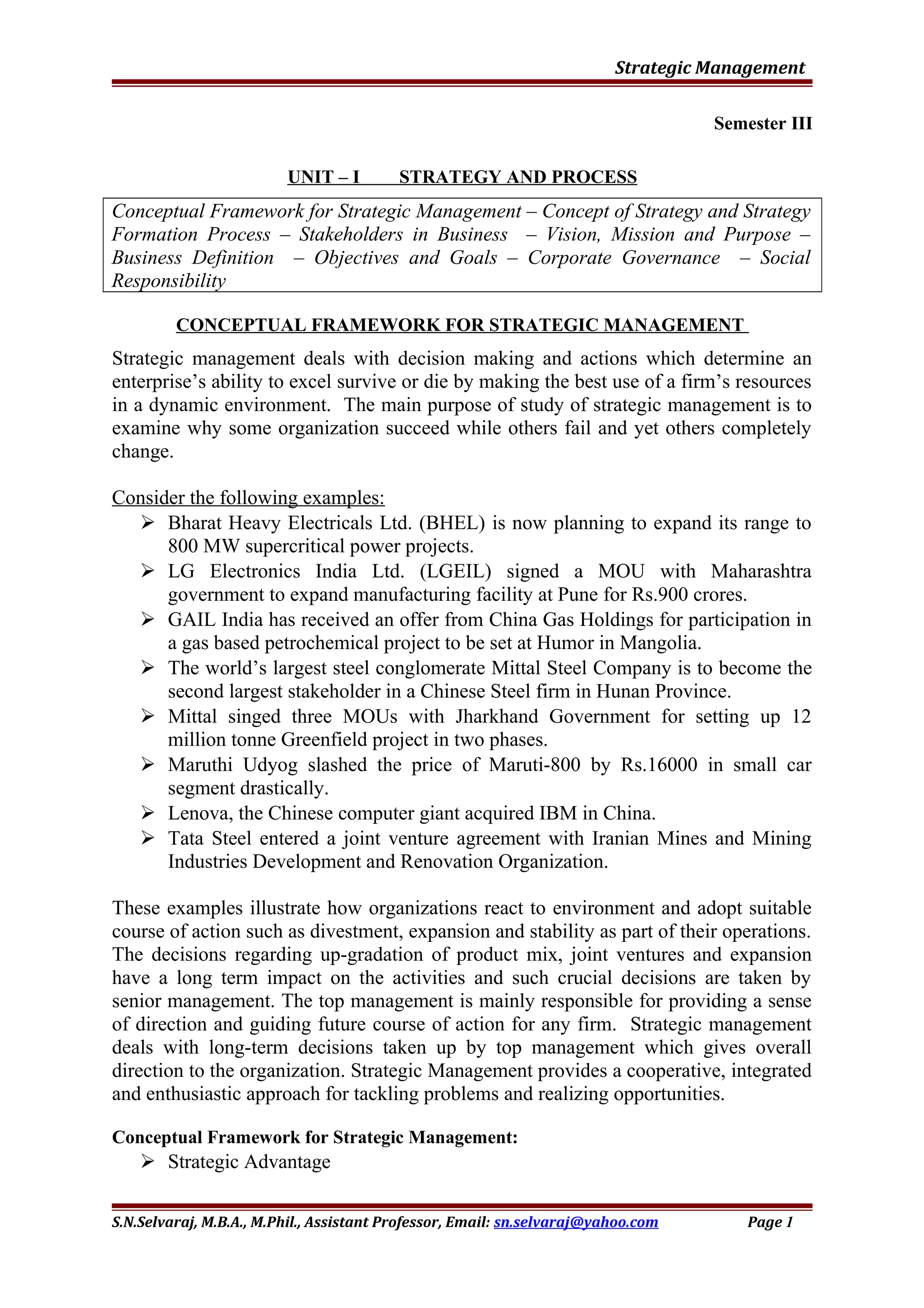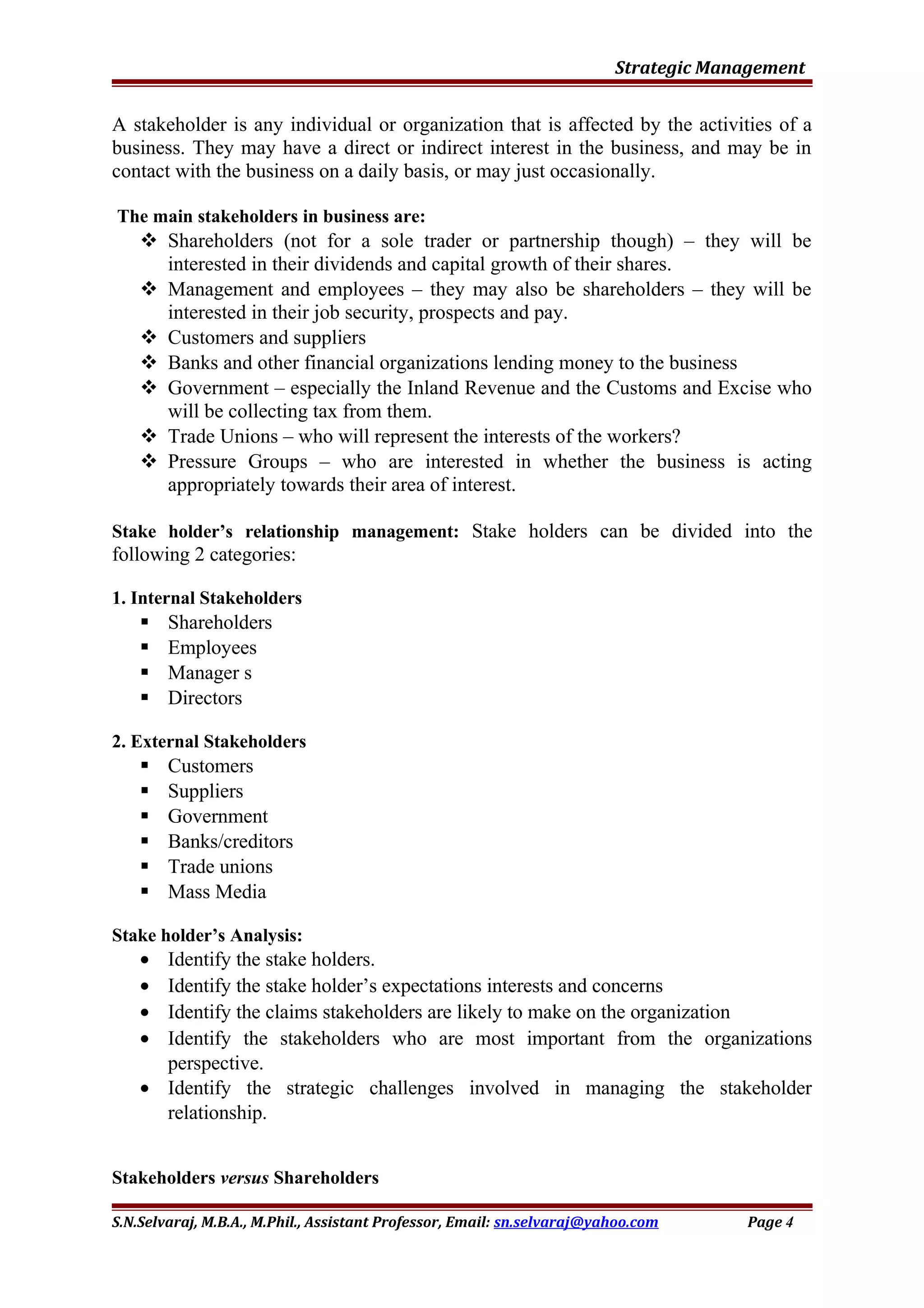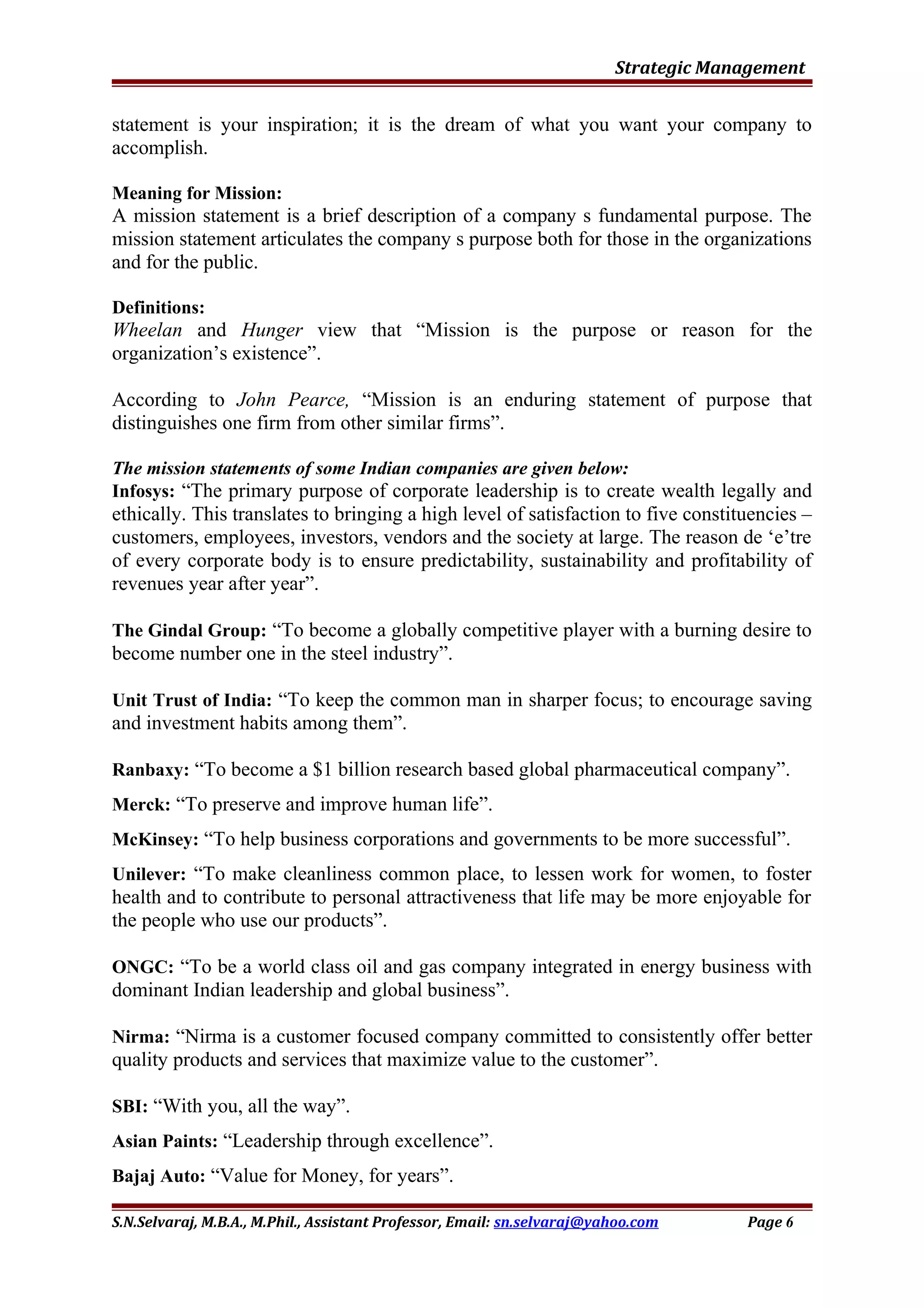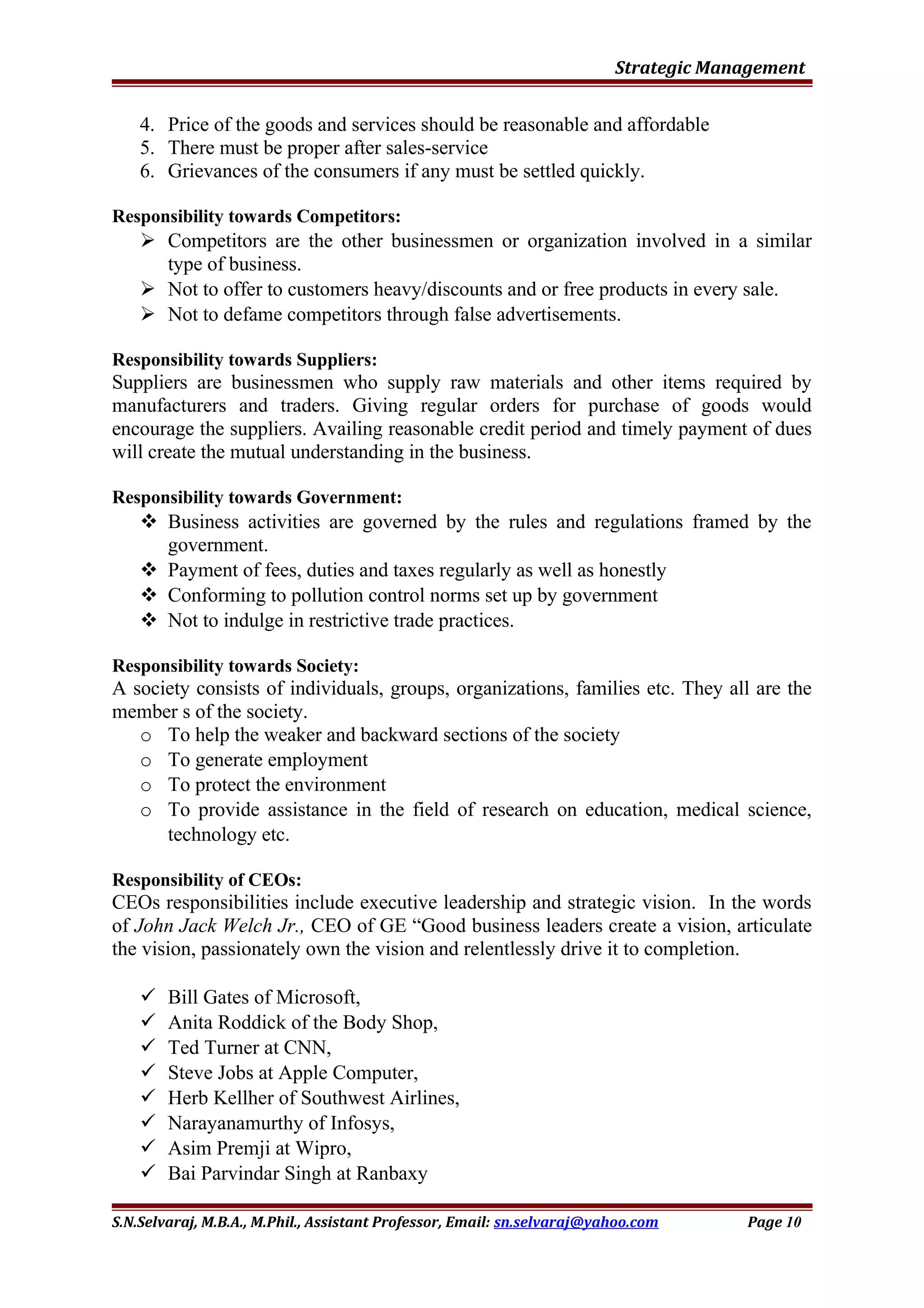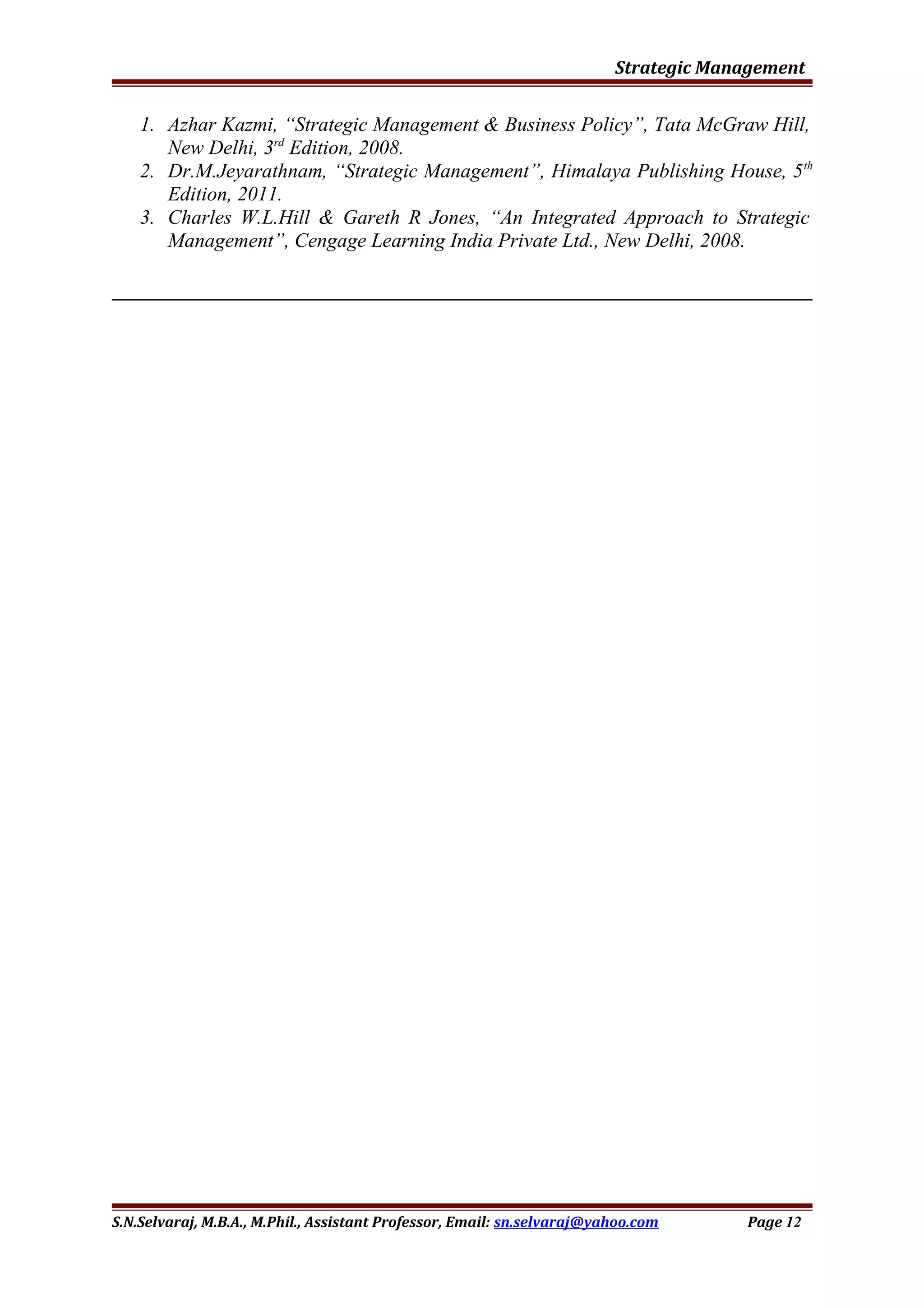The document discusses strategic management concepts including strategy formation, stakeholders, vision/mission, objectives, and corporate governance/social responsibility. It defines strategy as a plan to gain competitive advantage and examines Mintzberg's view that strategies can emerge organically. Stakeholders are groups affected by a firm's actions. Vision/mission provide direction, while objectives should be specific, measurable goals. Corporate governance oversees relationships between management, shareholders, and other stakeholders to ensure profitability and responsibility.
